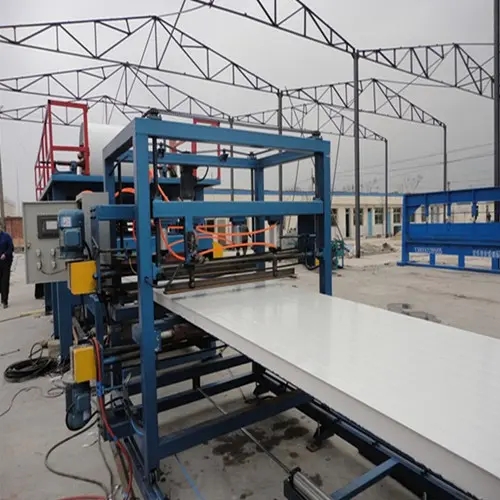
The Evolution and Benefits of Aluminium Cold Roll Forming Machines
The manufacturing industry is continuously evolving to meet the demands of modern architecture and construction, and one of the standout innovations in recent years is the aluminium cold roll forming machine. This advanced piece of equipment has transformed the way aluminium is processed, offering significant advantages in terms of efficiency, precision, and product versatility.
Aluminium is an exceptional material, renowned for its lightweight yet durable properties, which make it a preferred choice in various applications, ranging from automotive components to building structures. Cold roll forming, a process that involves shaping and bending metal at room temperature, allows for the creation of complex cross-sectional profiles without the need for extensive tooling or excessive energy consumption. This method is particularly suitable for aluminium, as it maintains the material’s integrity while achieving high levels of precision.
One of the primary advantages of using aluminium cold roll forming machines is the efficiency they bring to production. These machines can operate at high speeds, significantly reducing the time it takes to produce large quantities of components. Unlike traditional manufacturing methods that may require multiple processes to shape the metal, cold roll forming provides a streamlined approach, allowing multiple stages to be integrated into one continuous operation. This not only accelerates production but also minimizes waste, as the process is designed to maximize the use of raw materials.

In addition to their efficiency, aluminium cold roll forming machines offer unparalleled precision. Modern machines are equipped with advanced technology that enables highly accurate measurements and consistent tolerances. This is crucial in industries where specifications are stringent, such as the construction and automotive sectors. A slight deviation in dimensions can lead to significant issues in the final product, making the high precision of cold roll forming a key selling point.
Moreover, the versatility of aluminium cold roll forming machines cannot be understated. These machines can produce a wide range of profiles and shapes, catering to various applications and customer requirements. Whether it’s creating structural beams, roofing panels, or decorative elements, cold roll forming can accommodate each design with minimal adjustments. This adaptability extends to the types of aluminium alloys that can be processed, allowing for the creation of specialized products tailored to specific performance characteristics.
The environmental aspect of aluminium cold roll forming is also noteworthy. Aluminium is a recyclable material, and the cold roll forming process itself generates less scrap compared to traditional methods. As manufacturers and consumers become increasingly eco-conscious, the ability to reduce waste and utilize recycled materials is a significant advantage. Additionally, the energy efficiency of cold roll forming contributes to lower carbon emissions, aligning with global sustainability goals.
In conclusion, the introduction of aluminium cold roll forming machines represents a significant advancement in the manufacturing processes associated with this versatile metal. With their ability to enhance efficiency, ensure precision, offer versatility in design, and promote environmental sustainability, these machines are poised to play a pivotal role in the future of aluminium production. As industries continue to innovate and seek out cost-effective solutions, the cold roll forming method stands at the forefront, providing the tools necessary for modern manufacturing challenges while paving the way for new possibilities in product development.